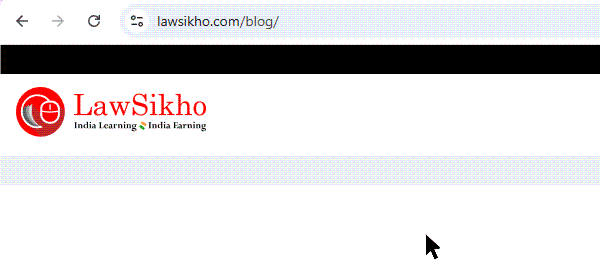This guide explains the legal framework for protecting designs, defined as aesthetic features like shape, pattern, or colour applied to commercial articles. You will also learn about the registration process, including classification, application preparation, and submission, emphasising the need for novelty and non-disclosure before filing. I will also provide you with practical tips, such as documenting the creation process and registering before public display.
Table of Contents
Introduction
I have a friend, Ghun, who creates these beautiful sarees that have unique stories printed on them. At least they used to be, before the prints went viral and were copied onto cushions, curtains and everything that could be printed upon.
I was sitting in her studio a few days after I received her frustrated call.
Her table was strewn with fabric swatches, hand-drawn patterns, notes on dyes, a true artist’s pad. She looked a little heartbroken.
“This is the part that kills me,” she said, flipping over a tracing sheet of her lotus motif design.
“I put months into this series. And now anyone can just download it off Pinterest and use it.”
I told her, gently, that while the fear was real, there was something she could have done, and still could do, at least for her future collections.
“How?” she asked.
“You register your design.”
“Not copyright?”
“No, not copyright.”
She sighed, but let me explain, and safe to say, her future designs are now well protected.
If you are still here, I am sure it is because you want to know the difference, too. So, read on.
Legal framework
Let us first understand what design is. Under section 2(d) of the Design Act, 2000, it is defined as,
“design” means only the features of shape, configuration, pattern, ornament or composition of lines or colours applied to any article whether in two dimensional or three dimensional or in both forms, by any industrial process or means, whether manual, mechanical or chemical, separate or combined, which in the finished article appeal to and are judged solely by the eye; but does not include any mode or principle of construction or anything which is in substance a mere mechanical device, and does not include any trade mark as defined in clause (v) of sub-section (1) of section 2 of the Trade and Merchandise Marks Act, 1958 (43 of 1958) or property mark as defined in section 479 of the Indian Penal Code (45 of 1860) or any artistic work as defined in clause (c) of section 2 of the Copyright Act, 1957 (14 of 1957).
What a tongue twister, right?
Let us understand what this means.
Say, you create a beautiful motif and apply it to a saree, or a cushion, or a handbag— you are not just making art, you are shaping a product with a design.
And in legal terms, that word, design, has a very specific meaning.
Under the Designs Act 2000, a design refers to the features of:
- Shape,
- Configuration,
- Pattern,
- ornament, or
- composition of lines or colours
applied to any article by an industrial process, which, in simple terms, means anything that is produced for commercial use.
But the key is this: that design must appeal to the eye. It must be visible, aesthetic, and non-functional.
Ghun leaned in at this point. “So you are saying, it is not enough for the design to be pretty, it has to be applied to something physical?”
Exactly.
Her lotus motif? As a painting framed on a wall, it is protected by copyright. But once she puts it onto a saree border, turns it into a repeat pattern for production, and begins selling those sarees, it becomes a design. And that is where design registration steps in.
To be registrable under the law, a design must satisfy four conditions:
- It must be new or original.
This means that your design should not have been published anywhere in India or abroad before the date of filing. Even uploading it to social media platforms such as Instagram or Twitter before applying can hurt your claim. It is a tricky trap for most artists because you naturally want to share your work. But in IP law, disclosure before protection is like setting your shield down before the fight.
- It must be applied to an article.
The design cannot just float in abstract space. It has to be applied to a tangible product. For Ghun, that article was about the saree. For you, it might be a bottle, a bedsheet, or a ceramic mug.
- It must be purely aesthetic.
Design law does not care if the motif helps the saree dry faster or keeps you warm. It only protects what pleases the eye, not what serves a function. If a feature is functional, it will be covered under patent law and not under design.
- It must not be scandalous, obscene, or contrary to public order
Thankfully, Ghun’s soft florals and mythological themes passed this filter easily. Once we had talked through this, I saw her face change. She was not just angry anymore, she was focused.
“So I cannot stop them from using this particular lotus design now. But I can stop them from copying the next one, right?” she asked.
Exactly. But for that, we had to make sure she registered the upcoming series before launching it publicly.
If you are a creator reading this and you have never thought of your surface designs, your prints, patterns, or product aesthetics as registrable designs, it is time to reconsider. The law is already in place. You just have to make the first move.
The registration process
By now, Ghun was clear that the lotus print was gone. It took some time to make peace with it. But we could not put the genie back in the bottle. But she was already sketching a new collection, nine motifs, each inspired by a precious stone from Indian mythology. She called it Navaratna.
This time, we were going to do it right. From the ground up. From the moment the first sketch was drawn, we treated every step like a legal milestone. And if you are a designer or advising one, you will want to know how the process actually unfolds, without the jargon.
Here is what we did.
Step 1: Classify the design
Design registration in India does not follow a one-size-fits-all. The Designs Office uses the Locarno Classification, an international system that categorises products into 32 main classes.
You can find your classification here.
The saree itself belongs to Class 02 – Articles of clothing and haberdashery, and specifically Subclass 02-05, which covers “other garments and haberdashery.”
India’s accession to the Locarno Agreement happened in 2019, and Design Rules, 2001, were amended as of 25 January 2021. The Design (Amendment) Rules, 2021 is the latest one.
If you are registering a surface design (like a print), you classify it based on the article it is applied to. So even if the same floral motif is printed on a bedsheet and a saree, you will need two separate applications, each under its appropriate class.
We picked Class 02 for Ghun’s sarees and made sure to note it clearly in her application. If you are unsure, the Controller General’s website has a helpful index, or you can speak to an IP professional.
Step 2: Prepare the application (Form 1)
Next came the paperwork. The primary form is Form 1, which might sound intimidating, but is actually straightforward once you know what goes where.
This is where things start getting real.
This may look like a boring legal document, but do not let that fool you. It is your key to getting protection under Indian design law. With this single form, you are telling the Designs Office: “Hey, I made this. I’m proud of it. And I would like the law to recognise that.”
Let us walk through the process together, line by line, using a real example from Ghun, a boutique label designing contemporary prints for sarees rooted in India’s gemstone lore. The design we are registering? A print called “Pukhraj”, which consists of architectural elements of South Indian temples, particularly stone carvings found in ancient Dravidian shrines
- Name of the applicant
Here, you need to fill in the full legal name of the individual or business that is applying.
Ghun Khumari
If you are applying as a proprietor or under a registered brand name, mention the full legal form, for example:
Ghun, a sole proprietorship owned by Ms. Ghun Khumari.
- Address of the applicant
No. 7, Lotus Street, Trivandrum – 695001, Kerala, India
- Nationality of the applicant
This is quite obvious; fill in the country of citizenship or incorporation.
Indian
- Name of the article to which the design is to be applied
You just need to write the product bearing the design.
Saree
Keep it precise, though. If it is for the border only, you can write:
Saree with ornamental border
- Class and sub-class of the article (Locarno Classification)
Figure out your class based on the Locarno international classification. For Ghun, it will be:
Class 02, Sub-Class 02-05
This is for clothing and haberdashery. You can check the Locarno Classification for confirmation.
- Name and address of the author of the design
Here, you need to fill in who actually created the design, and in our case, it is Ghun herself.
Ghun Kumari No. 7, Lotus Street, Trivandrum – 695001, Kerala, India
- Whether the applicant is the proprietor of the design
Tick “Yes” if the design is owned by the applicant. If Ghun made the design and owns Ghun, this is a straightforward “yes.”
- Description of the design
Here, you need to put in the entire description of the design. Keep it factual but simple.
The design consists of a repeating ornamental surface pattern inspired by the architectural elements of South Indian temples and the symbolic aesthetics of the Navaratna gemstones. This specific design, titled ‘Navaratna – Pukhraj’, draws from the lotus medallions and stepped arch motifs seen in ancient Dravidian shrines, blended with the yellow sapphire’s traditional symbolism of wisdom and grace. It is meant to be printed on sarees.
- Statement of novelty
What is new in your design? You need to add that here.
Novelty resides in the combination of ornamental temple motifs with symbolic gemstone elements, specifically the arrangement of lotus and arch patterns reflecting the essence of the Pukhraj gem, applied as a surface design on a saree.
- Address for service in India and signature
Here you need to enter the address where notices from the Designs Office should be sent. This could be your IP agent. Also, add your signature.
c/o Arjun K, Advocate, Flat No. 14, Greenview Apartments, TTK Road, Chennai – 600018
Signed by the applicant or authorised agent.
- Representation sheets
You must attach six identical copies of the design:
- On A4 white paper, clean and high-resolution
- With views of the article is 3D (for fabric, one full print view is usually fine)
- With the article name and applicant’s name clearly marked
- Preferably in black and white unless you want colour protection
- Fees
The fee depends on your applicant category. It will be ₹1,000 for an individual or startup, ₹2,000 for a small entity and ₹4,000 for others (e.g., companies). There will also be renewal fees of ₹2,000-₹8,000 if you want 5-year extension.
You can pay by demand draft or online (through the IP India portal)
Pro tip: Make sure the design is shown in black and white if you want protection across all colours. If you apply in colour, protection might be limited to that particular look.
Step 3: Submit the application
We filed the physical application with the Design Wing of the Patent Office at Kolkata. While other offices (Delhi, Mumbai, Chennai) accept filings, design registration is centralised in Kolkata.
We attached:
- Form 1
- Representation sheets
- Power of attorney (since I filed as her legal representative)
- Prescribed fee (₹1,000 for a natural person)
Today, you can file online too, which makes it much easier if you are not in Kolkata. But even then, the actual examination still happens at the main Design Office.
Step 4: Wait for the examination
This part requires patience.
Once submitted, the application is queued for formal and substantive examination. This will be done within 2-6 months for novelty and compliance. If there are objections, then you need to respond within one month, clarifying differences or amending minor details. Major changes aren’t allowed.
The examiner checks whether the design is new, if it falls under the Design Act definition and if there are any earlier identical designs on record.
If objections are raised, you get a chance to respond or amend. In Ghun’s case, one of her designs triggered a similarity check with a registered wallpaper pattern. We responded by clarifying that her motif was different in orientation, repeat size, and application. It passed.
After clearance, the design gets registered and published in the official Designs Journal. This journal is publicly accessible and acts as the formal notice of your rights.
Step 5: Receive the registration certificate
Ghun finally got her first Certificate of Registration.
Each of her nine Navaratna prints now had its own registration numbers, valid for 10 years, extendable to 15. She started putting “Registered Design No. ______” on her saree tags. And just like that, her art had legal teeth.
This whole process, from sketch to certificate, took around 6–8 months, although timelines can vary. But that waiting period is worth it, because the moment you file, you are already safer. Your design is pending registration, which itself can deter infringers once they know you are serious.
So, what rights does a design registration actually give you?
Ghun had someone copy her work again. But she handled it much better this time.
She was at another textile fair. This time in Bangalore, she spotted something familiar. A printed dupatta, boldly claiming to be “handcrafted Navaratna-inspired work,” using a watered-down version of her ‘Pukhraj’ motif. This time, though, she did not panic. She smiled.
“I know exactly what to do,” she texted me.
And she did. Because this time, she had registered rights. And that made all the difference.
Let us break it down, plainly, practically.
When your design is registered under the Designs Act 2000, you get an exclusive right to apply that design to the article for which you have registered it. No one else can reproduce it, sell products using it, or even import goods carrying it, without your permission.
In Ghun’s case, what did this mean?
No one could legally print her ‘Pukhraj’ design on a saree, dupatta, or even a textile panel meant for clothing. It did not matter if they changed the colours or adjusted the layout slightly. If the design was visually the same or deceptively similar, they were infringing.
These rights last for 10 years, and you can extend them for another 5 by applying before expiry.
But how do you use these rights?
Having rights is one thing. Enforcing them is another. Here is what Ghun did differently this time:
1. Cease and desist letter!
She told me to send a cease and desist letter. I drafted a short, firm notice to the seller of the infringing dupatta. I enclosed:
- Her design registration certificate,
- An image comparison of the original and the copy,
- A clear demand to stop manufacturing, displaying, and selling the copied product.
And we were not bluffing, we referenced section 22 of the Designs Act, which treats infringement as actionable, with remedies including injunction and damages or account of profits.
She sent the letter not only to the stall owner but to their listed website and Instagram handle.
The response? The products were taken down within 48 hours. No drama, no back and forth.
“I did not even have to go to court,” she told me, half in disbelief.
In some cases, enforcement may require follow-ups or legal action, but registration strengthens your position. Because here is the truth: having a registered design changes the conversation. You are no longer asking them to “please stop copying.” You are telling them, legally, you have the sole right to that design. And they are infringing.
2. She began marking her work as a deterrent.
Ghun added a simple line to her saree tags and website:
“Design registered under the Designs Act, 2000. Reg. Nos. ______.”
This may seem like a small step, but it signals to the world, especially competitors, that this is not a free-for-all. That her work is protected, monitored, and defended.
Even if you are not ready to enforce your rights in court, just having the registration and using it visibly puts people on notice. It tells them: this is not just art. This is protected IP.
3. She developed a rhythm for protection.
Every time she finished sketching a new collection, we would prepare the representations and file the design registration before any public release. No more delays. No more sharing the work online until the application is safely submitted.
Think of it like setting up a fence before you plant the garden. Once it blooms, it is harder to keep the animals out.
What you should know before you file
By the time Ghun had three registered designs under her belt, she was no longer calling me with urgent questions. She had learned to walk the path herself, and now, she was helping others find it too. But I still remember the questions she asked in the beginning. You might be asking them, too.
So here is what I wish every designer knew before filing for design registration in India, shared like I would over chai with a friend.
- Do not wait to file until you launch.
This is the most common mistake, and the most heartbreaking. If you publish or display your design before filing, even on your own website or Instagram, it may no longer be considered new or original under the Designs Act.
In Ghun’s case, we made this mistake with the lotus motif. The design had already been posted, shared, and printed by the time she thought of registration. And that meant we lost the opportunity to protect it.
So file first and share later.
- Each article needs its own registration.
Let us say you use the same peacock motif on a saree, a blouse, and a tote bag. That is three different articles. Even though the surface design is the same, each use case requires a separate design application under the appropriate class.
It is tedious, yes. But the Designs Office protects the design as applied to a specific article. So if you want full coverage, you have got to cover each form it takes.
- Keep a clear record of creation.
You will need to prove that your design is original, and sometimes you might be challenged. Maintain:
- Sketchbooks
- Timelines of development
- Date-stamped files or emails
- Internal drafts
These become your invisible shield when someone tries to question your authorship.
With Ghun, her sketching process was well-documented. That helped us explain the visual evolution of each design and why it was unique.
- A registered design is not the same as copyright
This part can be confusing. A motif you paint is protected under copyright as an artwork. But once you apply it to a product for industrial production (like fabric), it shifts into the world of design law.
And if you do not register it as a design before mass production begins, you may lose your copyright protection too. The law does not allow double-dipping once the design becomes commercial.
So, in short, copyright protects your canvas. Design registration protects your product.
- You cannot register a functional feature.
If your design improves usability, say, a new kind of hook or clasp, it might qualify for patent protection, not design. Design law protects the visual, not the functional.
Ghun once designed a reversible blouse pattern that also offered posture support. The pattern was beautiful, but we could not register the functional bit. We separated the two: registered the look under design law and explored the function under patent advice.
- You have a window for extension.
Design protection lasts 10 years, and you can extend it to 15 years by filing an extension application before expiry.
Mark your calendar. Missing this window means your design falls into the public domain, and anyone can use it freely.
Final thoughts
Ghun’s journey started with frustration and fear. But it ended with confidence, clarity, and control over her work. She did not have to become a lawyer. She just had to become aware.
And if you are a creator, textile artist, fashion designer, or surface pattern illustrator, this is your gentle nudge: your work is worth protecting. Not later. Not someday. Now.
Design registration is not just a legal formality. It is a declaration.
You are not just making art. You are building value.
And the law? It is ready to stand with you once you decide to take that first step.
FAQS you might be wondering about
Q: Will you lose copyright protection by applying a design to a commercial article?
Yes, and no. According to section 15 of the Copyright Act, copyright protection is not automatically lost by applying a design to a commercal article. But is lost only under specific conditions, such as industrial reproduction exceeding 50 copies. Ghun, after making a design, starts reproducing then she loses the copyright. That is why it is important to register the designs.
Q: What if someone slightly alters my design? Can I still claim infringement?
Yes, if the altered design is visually similar enough to deceive the eye, it can still count as infringement. Courts use the eye of an average consumer standard, not a technical expert.
Q: Can I register a handloom or craft-based design?
Absolutely, as long as it is original and applied to an article. Many handloom artisans and surface designers are registering their patterns today. The key is documenting originality and filing before public display.
Q: Can I license a registered design to others?
Yes. Just like other IP, you can license or even sell your design rights. If Ghun wanted to let another brand use her registered ‘Moti’ pattern on handbags, she could do so under a licensing agreement.
Q: What if I miss something in the application? Can I amend it later?
Minor clerical errors can be corrected. But if you miss filing the right statement of novelty or choose the wrong class, it can affect your rights. It is worth getting the application reviewed by someone with IP experience before submission.






 Allow notifications
Allow notifications
